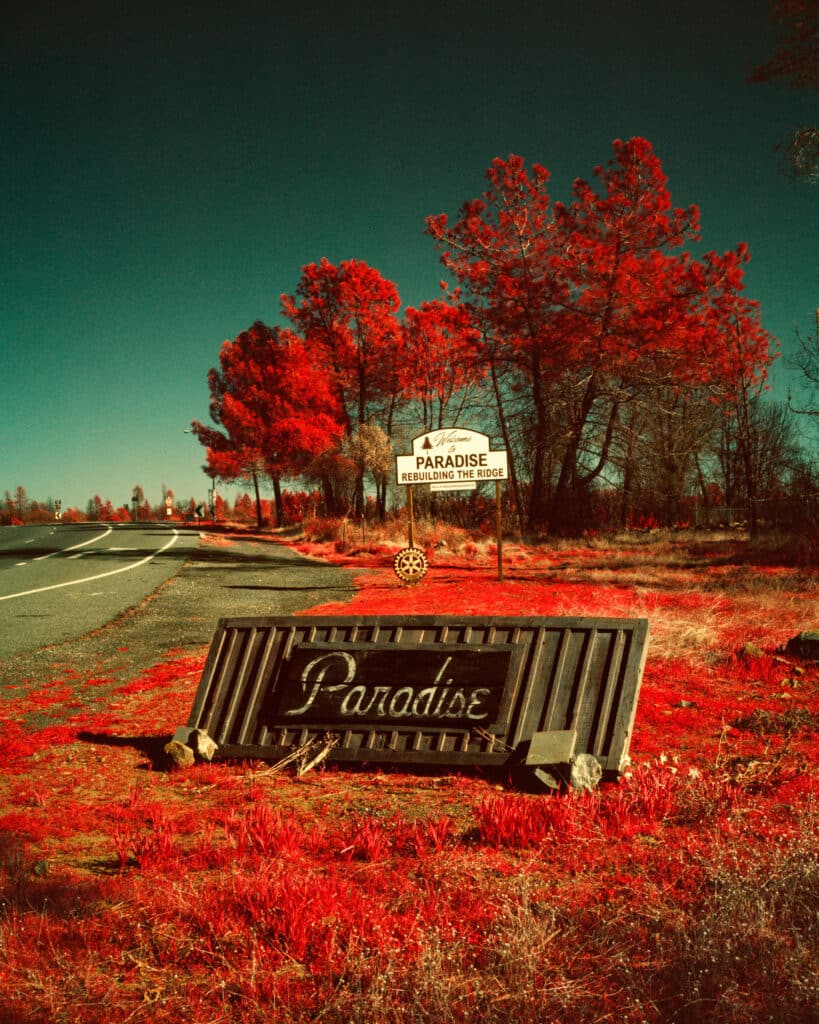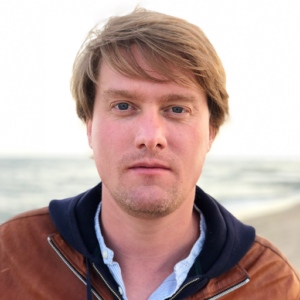On November 8, 2018, within just four hours, the massive Camp Fire razed the town of Paradise in northern California. The toll was devastating—89 lives lost, 18,800 structures destroyed—and many families were thrust into poverty. Since then, flames have threatened this once-Edenic corner every year.
In the summer of 2020, the North Complex Fire erupted just a few miles away. The following year, from July to October, the Dixie Fire—the largest wildfire in the state’s history—scorched nearly 400,000 hectares. It ignited in the same hills crossed by the power lines that had sparked the deadly Paradise fire.
Paris-based documentary photographer Maxime Riché visited the area twice to document the tragedy that has left the local population in distress. He explains that he wanted to “meet those who decided to rebuild their ‘paradise’ in a place that had become brutally inhospitable.” Some, he observes, cling to a personal mythology rooted in the pioneering spirit of the American West, while others remain paralyzed by the trauma, unable to move forward. Yet, little by little, all are coming to terms with the new reality, balancing the preservation of a cherished place with forging a new relationship with a landscape that has been deeply scarred.
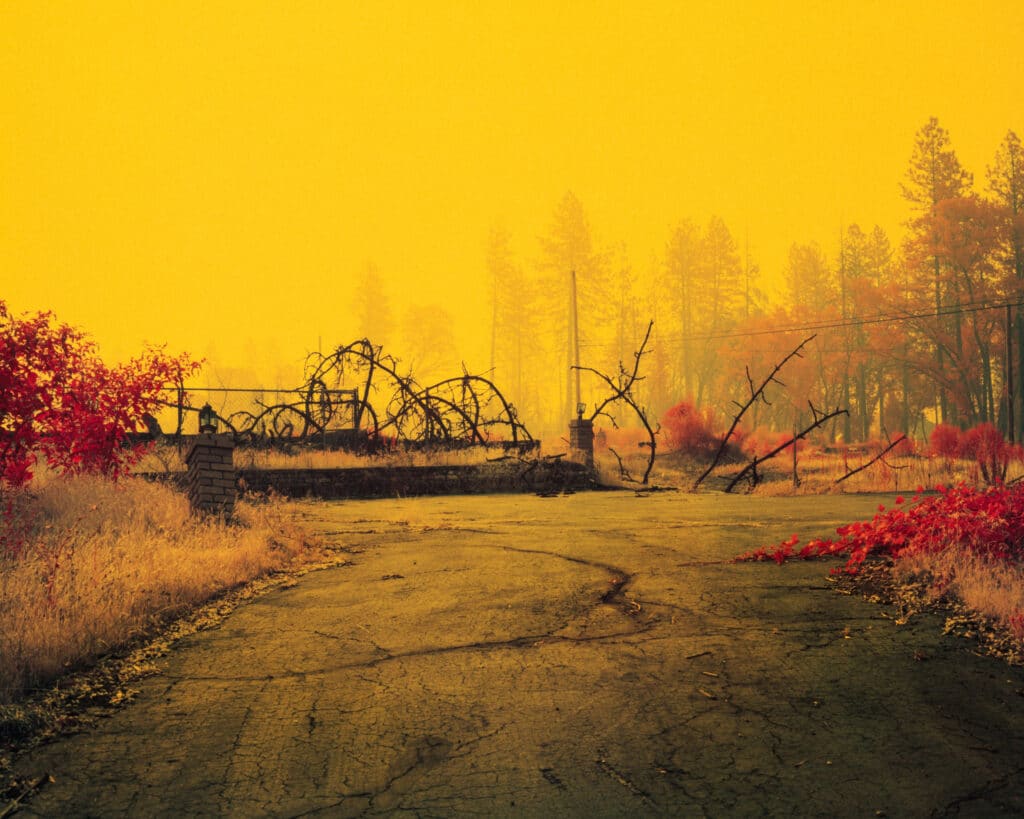
To capture the beauty and fragility of the site, selected as much for the resilience of its inhabitants as for the symbolism of its name, Riché chose infrared slide film, which transforms the whiteness of clouds into smoky yellow and the greenness of trees into fiery red. This serves as a metaphor for the fire’s impact on nature and the flames that continue to threaten the remaining untouched vegetation.
Several photographers before him have experimented with this technique, which was once used by the military for reconnaissance missions. In 2010, for instance, New Yorker Richard Mosse documented the civil war in the Democratic Republic of Congo in his Infra Series, a spectacular body of work using Kodak Aerochrome III Infrared 1443 film, which rendered the conflict in rosy hues.
In 2020, on the very first day of the Covid lockdown, French photographer Antoine d’Agata roamed the streets of Paris with a thermal camera to capture, in his own unique way, the viral outbreak that transformed the city into a strange theater of wandering souls, bowed heads, and fleeing bodies.
In Riché’s series, the technique echoes the intense emotions experienced by the men and women inhabiting these devastated landscapes. “The flaming colors punctuate the tenuous normality of a life they are trying to rebuild. These photographs act as suggestive ‘flashbacks’ to the hell that the inhabitants of this fallen Eden have been through, serving to recall the memory of the flames etched on the retinas of the survivors who are rebuilding in the shadow of the next disaster.”
This photographic work is the result of an in-depth investigation. The numerous testimonies collected by the documentary photographer are interspersed throughout the book he produced, simply titled Paradise and available from André Frère, revealing the distress of the survivors. For example, Amanda’s testimony: “With survivor’s guilt came a lot of intrusive thoughts. I would get these flashes of the fire and the burning trees and the screams of people who couldn’t get out.” And Mary: “We had to prove that we lived here. But we had no papers to prove it. All burnt. This is a mess up here and nobody cares.”
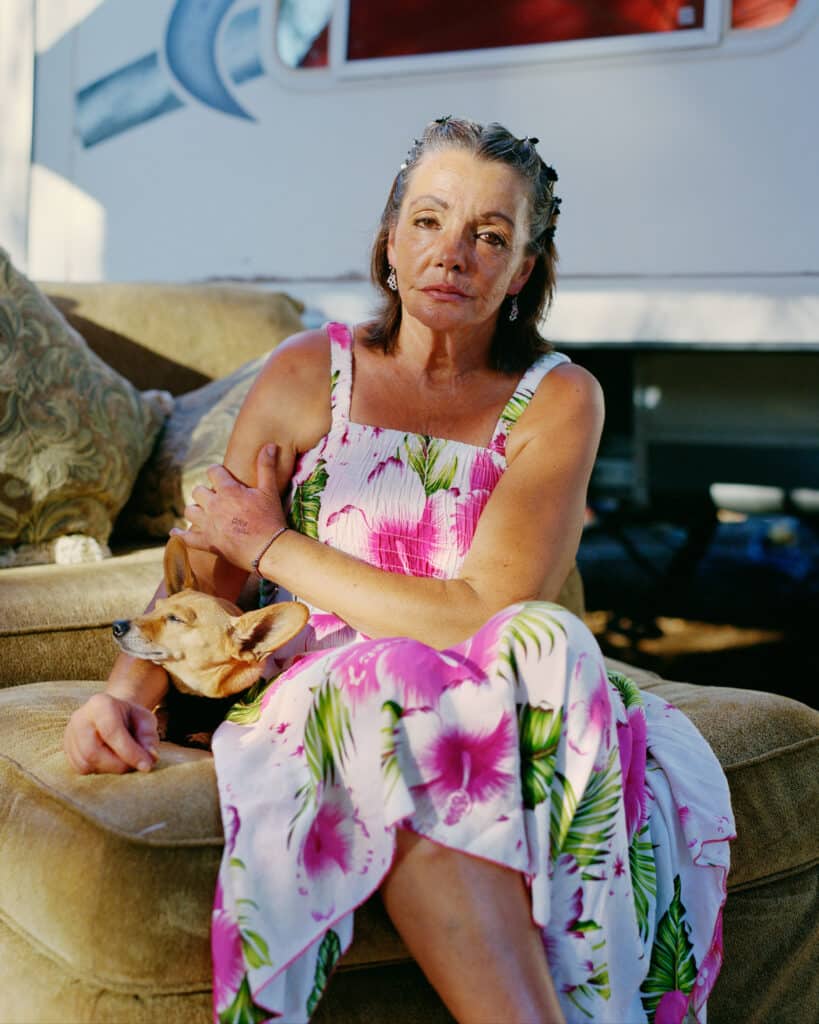
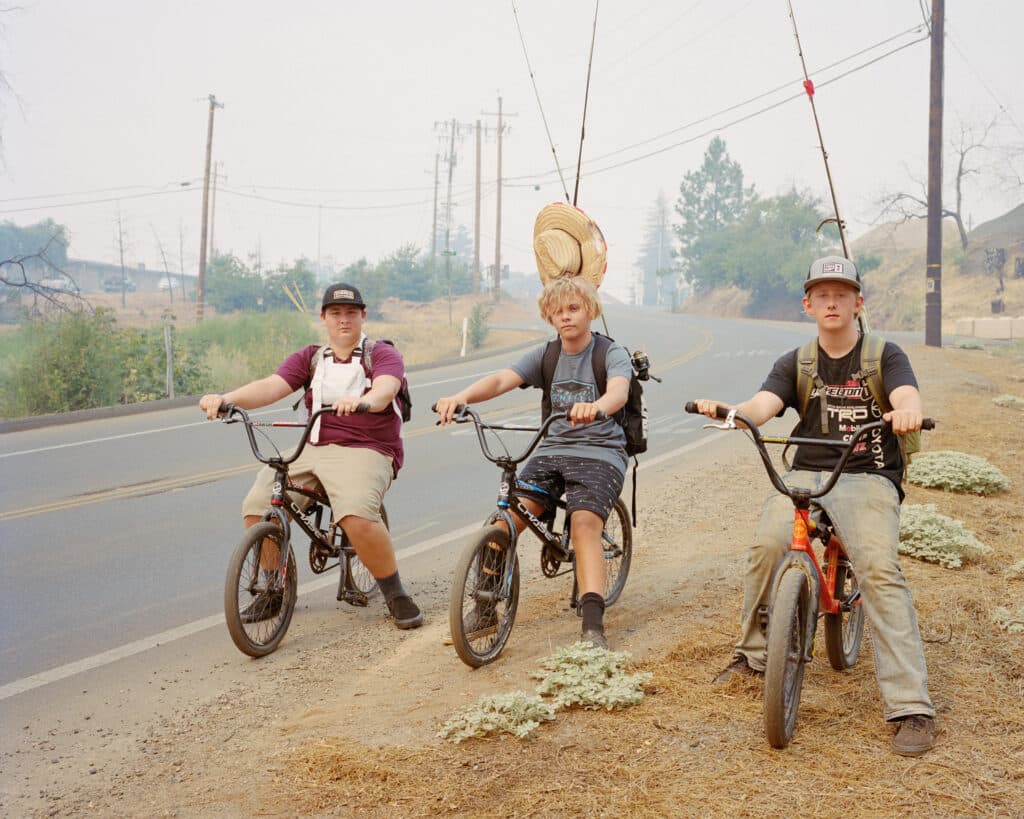
The book brilliantly combines infrared images with more traditional documentary photographs, with colors so true to life that the difference isn’t immediately noticeable. The project also received support from the Centre National des Arts Plastiques and went on to win the Prix Dahinden—Une Autre Empreinte, whose 2024 edition focuses on the theme of fire. A unique aspect of this award is that the public can vote for their favorite photographer from a shortlist of three recipients, with the winner gaining the opportunity to exhibit their work at Paris Photo in November.
Maxime Riché photographed Paradise not only to denounce our exploitative relationship with the natural world but also to highlight our capacity to adapt to climate change and document the evolution of our lifestyles under the pressure of these new conditions. Riché’s series invites us to reflect on the original meaning of the word “apocalyptic”: the story of Paradise foreshadows the next place—Australia, Brazil, Siberia, Greece, Turkey, or elsewhere—that will have to heal after a catastrophe increasingly caused by human actions. It suggests our growing disconnection from nature, our hubris, and our insistent desire to defy it at any cost.
It’s important to remember that megafires are not unique to California, even though the state has become one of the most dramatic stages for such events. The unprecedented heat waves recorded in 2022, and the devastating fires that followed, had a significant impact on France. In Gironde that summer, massive fires burned nearly 74,000 acres of forest. The Broceliande forest in Brittany and Corsica were not spared either. We are entering what Stephen J. Pyne, Professor Emeritus at Arizona State University, calls the Pyrocene—the Age of Fire.
Maxime Riché, Paradise, Editions André Frère, €49.
To support Maxime Riché as the Dahinden Award winner to be exhibited at Paris Photo, click here.

